from ISSMGE Bulletin: Volume 2 Issue 4 December 2008 (pp.3-4)
View of Young Geotechnical Engineers
19th European Young Geotechnical Engineers’ Conference
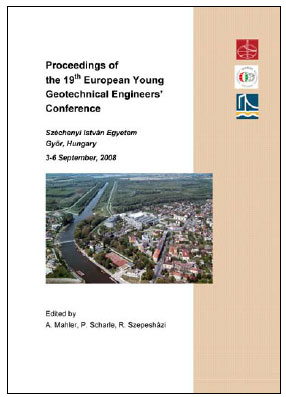
The front cover of the conference proceedings
More than 20 of the European member societies (out of 35) had sent their delegates to Győr (Hungary), hosting town of the 19th Conference of Young European Geotechnicians on 3-6, September 2008. The campus of the Széchenyi István University and the lodging in the Hotel Révész (at a walking distance from the site) proved to be an adequate environment, even during the enrolment week for students of 11 thousands, starting with their Autumn semester.
The invitation released in January had met the underlying principles to follow, as accepted by the Board of ISSMGE for the iGECs in Brisbane last October. Rules about the paper submission and presentation were fulfilled, participants had got the proceedings at their registration. Participation fee could be kept slightly below the recommended limit, thanks to the ISSMGE support and generous contribution of Strabag Hungaria – the guidelines work well and efficiently.
On the eve of the conference Tamás Szekeres, rector of the university delivered the greeting speech in the old Synagoge of Győr, recently renovated and converted into a cultural centre. In the presence of Pedro Séco e Pinto, Roger Frank opened the event officially. A short concert given by a brass-instrument ensemble of the Faculty of Music was followed by the get-acquainted reception. All ice, if any, had been broken during this evening.
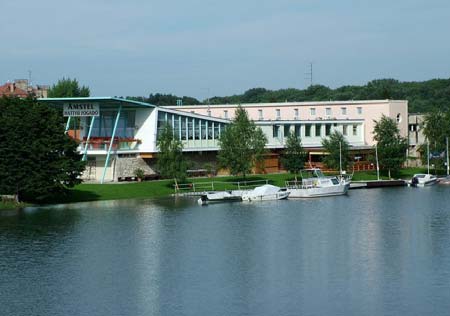
Site of the Thursday dinner
During Wednesday and Thursday more than forty lectures of 12-15 minutes were presented by the participants. According to the guidelines, the sessions were “chaired by friendly, professional engineers”, mainly senior members of the ISSMGE Hungarian National Committee. A dozen of young Hungarian engineers joined the delegates as invited observers. The audience was impressed with the continuous and active presence of the President and the European Vice President. Pedro and Roger entered and stimulated the discussion, took the burden of chairing sessions and were available for chats during the breaks. Besides, they delivered keynote lectures (Lessons Learned From Two Case Histories of Retaining Structures and Geotechnical design of piles according to Eurocode 7, respectively). Richard Ray (University of North-Carolina, now Fulbright visiting professor at the Széchenyi István University) talked about Soil Dynamics Research and Development in the US, and Peter Scharle (past president of the ISSMGE HNC) discussed The role of case studies in the geotechnical education at different levels (all of the submitted papers and several photos are available on the website www.ygec2008.hu).
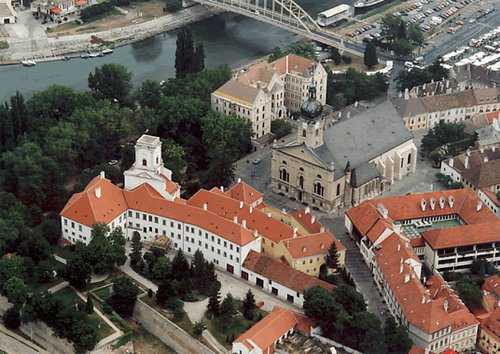
Bishop’s palace and Cathedral
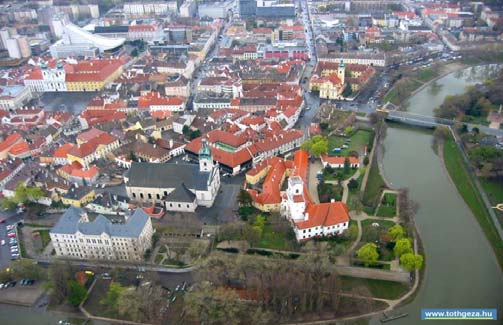
Aerial view of the downtown

Aerial view of Győr
Two days of hard work were encompassed with more relaxing evening programmes. A sight-seeing from the shipboard cruising the rivers of Győr preceeded a dinner with wine tasting on Thursday. Next day, the conference dinner took place at the Vidra Csárda (at a fishing lake site close to the Duna river). Starting with more formal issues, the results of the delegates’ performance evaluation accomplished by the participants were announced. Winners of the competition, extended to the quality of papers and their presentation with respect to several points of professional content and technical delivery, were Vera van Beek (NL), Christian Lackner (AT), Anna Ramon Tarragona (ES), Hassan Ali (FR) and Carlo Rabaiotti (CH). The evening turned to be less formal when Richard presented himself as an experienced game organizer, creating groups, raising competition about questions of geotechnical
history, phenomena, personalities and sites. Winners were happy with their prizes, loosers with the amusement. Folk dancers closed the dinner’s program, successfully drawing the participants into dancing outside of the dinner hall in the warm September evening.
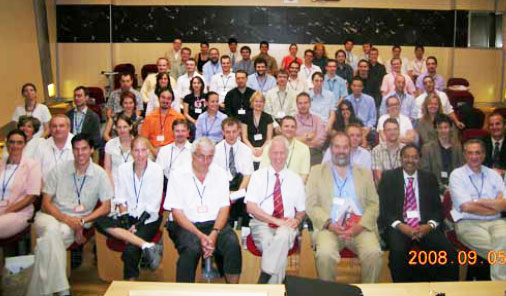
Participants in the lecture hall, Széchenyi István University
Those who had not found the night too short next morning at 7 could join the excursion to the 4th metro line under construction in Budapest, capital of Hungary. They were received in the public information centre by Gustav Klados, chief executive director of the project. Gus, a well known actor of the international tunnelling scene, presented a very detailed explanation of all questions about planning and construction. Subsequently, participants could see two sites with lined tunnels and stations in construction.
Reported by Prof Peter Scharle, chair of the Local Organizing Committee
Download ISSMGE Bulletin – Volume 2 Issue 4 December 2008 (pp.3-4)
![]() PDF format
PDF format




































